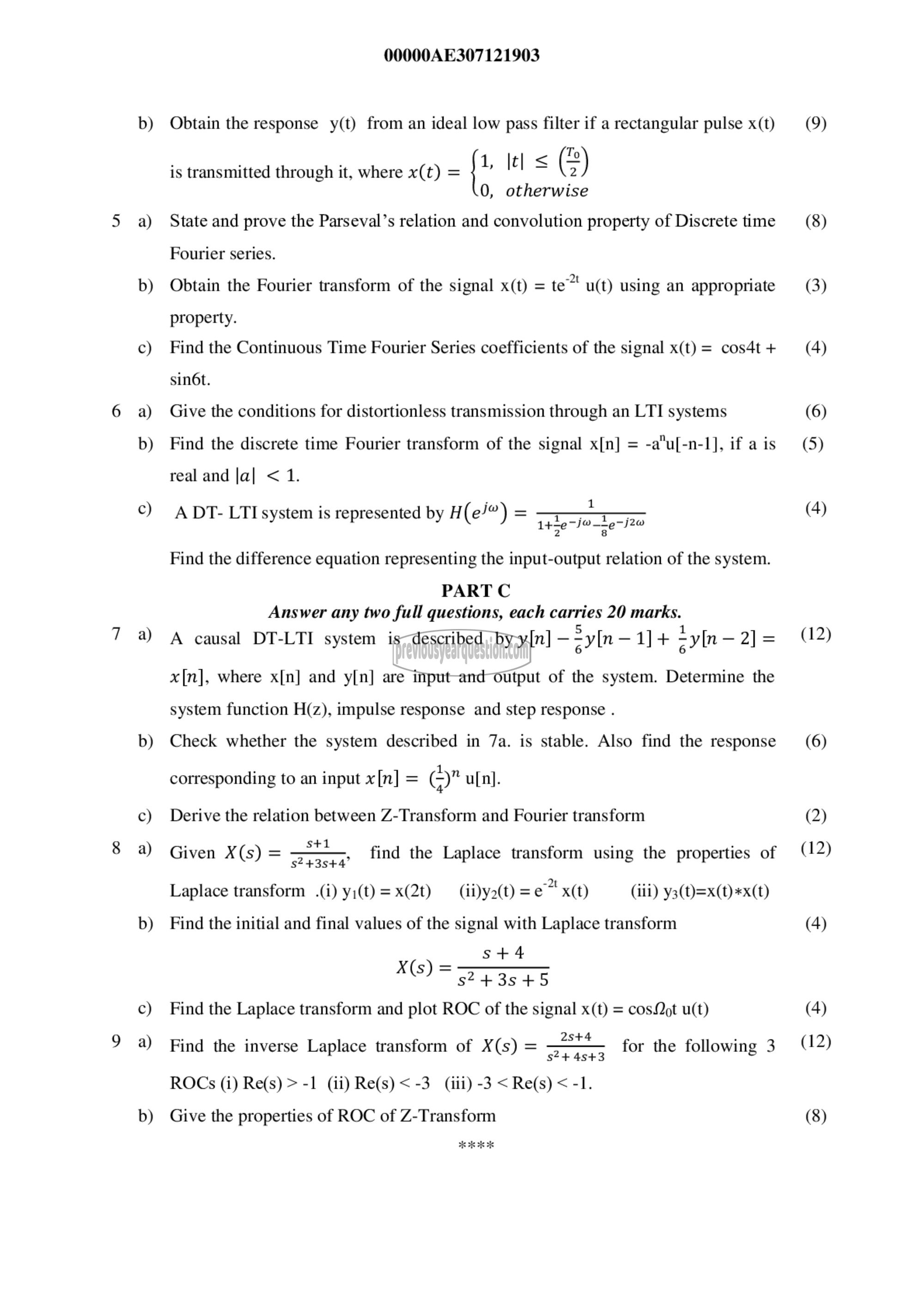APJ ABDUL KALAM TECHNOLOGICAL UNIVERSITY Previous Years Question Paper & Answer
Semester : SEMESTER 5
Subject : Signals and Systems
Year : 2020
Term : DECEMBER
Scheme : 2015 Full Time
Course Code : AE 307
Page:2
b)
a)
b)
0)
a)
b)
0)
a)
b)
0)
a)
b)
0)
a)
b)
00000307112103
Obtain the response y(t) from an ideal low pass filter if a rectangular pulse x(t)
is transmitted through it, where x(t) = 08 ١١ < (2)
0, otherwise
State and prove the Parseval’s relation and convolution property of Discrete time
Fourier series.
Obtain the Fourier transform of the signal x(t) = te~ u(t) using an appropriate
property.
Find the Continuous Time Fourier Series coefficients of the signal x(t) = cos4t +
sin6t.
Give the conditions for distortionless transmission through an LTI systems
Find the discrete time Fourier transform of the signal x[n] = -a"u[-n-1], if a is
real and |a| > 1.
∙ | 1
T. 7 01 1८0} ہے _ 7
A DT- LTI system is represented by H(e ) = ന്ന പി
Find the difference equation representing the input-output relation of the system.
PART C
Answer any two full questions, each carries 20 marks.
A causal DT-LTI system is described by y[n] - 221१ - 1] + 521 - 2] =
2 [11], where x[n] and y[n] are input and output of the system. Determine the
system function H(z), impulse response and step response .
Check whether the system described in 7a. is stable. Also find the response
⋅ ⋅ 1
corresponding to an input x[n] = (727 णण.
Derive the relation between Z-Transform and Fourier transform
Gi 1 ⋅ ⋅ ⋅
iven X(s) = 3 <**_ و the Laplace transform using the properties of
+3s+4
Laplace transform .(1) yi(t)=x(2t) (01)920) = ह x(t) (111) y3(t)=x(t) *x(t)
Find the initial and final values of the signal with Laplace transform
5 +4
52+ 36+ 5
Find the Laplace transform and plot ROC of the signal x(t) = ௦082 u(t)
X(s) =
2s+4
524 4543
Find the inverse Laplace transform of X(s) = for the following 3
ROCs (1) Re(s) > -1 (ii) Re(s) > -3 (111) -3 < Re(s) > -1.
Give the properties of ROC of Z-Transform
(9)
(8)
(3)
(4)
(6)
(5)
(4)
(12)
(6)
(2)
(12)
(4)
(4)
(12)
(8)
